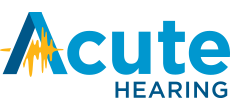Mild hearing loss is anything but mild. In fact, mild is a bit of a misnomer, especially when it comes to hearing loss. According to audiologists and hearing specialists, someone with mild hearing loss is unable to hear sounds quieter than 25 dB. However, any hearing loss threshold between 26-40 dB is classified as mild hearing loss.1 But what does that mean in the real world?
Mild Hearing Loss in Everyday Life
Some common sounds that you might hear on a given day at or below 25 dB include:
- Whispering nearby
- Leaves rustling
- A mosquito or fly buzzing about
- The sound of someone breathing
So realistically, someone with mild hearing loss would already be missing out on many sounds that 1) enrich our quality life, and 2) inform our situational awareness. And mild hearing loss doesn’t just mean we miss out on certain sounds; it also distorts how we hear other sounds.
For instance, a person with mild hearing loss may be able to hear someone speaking close to them or if they’re talking in a quiet room. However, they may struggle to hear that same conversation in a busy room with competing conversations. Or they might complain that everyone is always mumbling around them and that people should speak more clearly. They may even complain that something is blocking their hearing physically (like earwax) and that they would hear fine if they just cleaned their ears out.
So short of measuring in terms of decibels, it’s important to take note of signs like these when trying to tell if you or someone you love has mild hearing loss. Because when it comes to hearing loss, timing is everything. Most forms of hearing loss are permanent and degenerative, meaning that it will only worsen over time without intervention.
Other Indicators of Mild Hearing Loss
- Certain sounds become harder to hear than others: Some consonants like f, k, s, and sh are very soft, and people with mild hearing loss struggle to hear them. Words like this, taste, house, first, nice, and thirsty are the most commonly confused words for individuals with hearing loss because of those consonant sounds.
- Things don’t sound as clear as they used to: The most common form of hearing loss, noise-induced hearing loss (NIHL), occurs when the sensory hair cells responsible for picking up sound signals become damaged; once damaged, they can’t relay sound to the brain at the same quality which results in a muffled or distorted signal.
- Louder = better: Someone with mild hearing loss may not be able to hear well at low volumes, but they can still hear better at higher volumes. They may resort to turning up the volume on things like the TV or radio much to the frustration of those around them.
Prevention
But there is good news. For the most part, hearing loss is readily preventable with early adoption of healthy hearing habits. These can help delay the onset of hearing loss and include things like:
- Listening to audio like music, TV, movies, etc. at an appropriate volume, especially when using personal listening devices like headphones and earbuds. The 60/60 rule suggests keeping listening devices at or below 60% maximum volume for no more than 60 minutes at a time.
- Protecting your hearing when you’re exposed to unsafe noise levels by using hearing protection devices like earplugs and headsets. If you work in an environment where noises frequently exceed safe levels, be sure your employer is following OSHA and NIOSH protocols.
- Giving your ears a break from continuous noise exposure so your auditory system has time to recover.
- Schedule routine hearing tests. Adults 18-40 years old who are in overall good health and are not experiencing any hearing loss symptoms should get a routine hearing test every 3-5 years. If you do suspect you have some form of hearing loss, then you should schedule more frequent exams. After the age of 40, try to schedule a test every 1-3 years.3
Treatment
And there’s better news too! Mild hearing loss is treatable with intervention like hearing aids. With the right hearing aids, people with mild hearing loss can get back to hearing their best. As a matter fact, the newest generations of hearing aids are able to mimic the brain’s sound processing system for the most accurate and true-to-life sound quality. So even in the most difficult of listening environments, you don’t have to worry about missing a thing.
Stop Underestimating Mild Hearing Loss
In the past, people didn’t take mild hearing loss seriously because they thought it was just that: mild. But now we know differently. Research over the last 10 years alone has shown that hearing loss accelerates brain shrinkage, that hearing loss is the #1 treatable risk factor for dementia, and that the use of hearing aids in adults with hearing loss can improve mortality rates.
If you suspect you or someone you love has hearing loss, whether mild or otherwise, seek professional treatment today. Only a licensed audiologist or hearing specialist can diagnose hearing loss, the type, and the degree, and get you the care you need. After all, the sooner you address your hearing loss, the sooner you can get back to enjoying the rich, rewarding sounds of your life.
References:
- Degree of Hearing Loss. American Speech-Language-Hearing Associations. Found on the internet at https://www.asha.org/public/hearing/degree-of-hearing-loss/
- Lowery, Kristy PhD, CCC-A, FAAA. How Often Should I Have My Hearing Tested? Audibel. Found on the internet at https://www.audibel.com/hearing-loss-treatment/how-often-to-get-hearing-tested/
